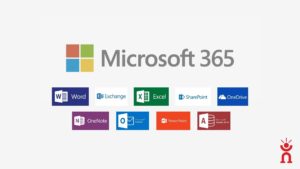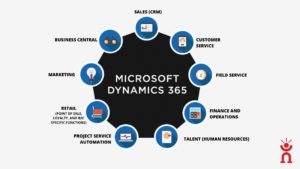Microsoft Office 365 vs. Dynamics 365
What is Dynamics 365? What is the Difference Between Microsoft Office and 365? Which one is the CRM tool? Which one is ERP? Does O365 give me an email? Does Microsoft Office regularly add new features?
People who are just beginning to investigate business software ask these questions frequently. The answers are at once simple and complex. Simple, because 365 is really just a suite of business applications that you can take advantage of very easily. Complex, because they do so much and cover so much territory within your enterprise that it takes a lot of effort to wrap your head around what is available to you.
The Basics
Let’s start with some vocabulary. Dynamics 365 is usually referred to as “D365”. Office 365 is usually referred to as “O365”. Both Office and Dynamics are part of the 365 platform so they boast a common data model which means that they can communicate freely with each other as needed. If you’re talking to a Microsoft salesperson, they might use the term “M365” to reference their high-end enterprise licensing but for most of us out here in the trenches, we use M365 to refer to the combination of D365 and O365.
What is M365?
M365 is a suite of online software applications that businesses use to manage their enterprise. These tools range from marketing and CRM to finance and business intelligence. We should distinguish M365 from the suite of Azure services that Microsoft offers. Azure services include Natural Language Processing and Artificial Intelligence and much more. Too many to list in this post but you can find a comprehensive list here. Azure services and O365 can work together to do things like including the content of an automated chat in your CRM, but that is the topic for a different blog.
Now let’s get down to the details of Microsoft Dynamic 365. Since everyone uses email I’ll discuss the Office side of 365 first. O365 includes the core Office applications: Outlook, Word, Excel, and PowerPoint, but adds in some other robust tools like Access and OneNote as well as services like OneDrive, Exchange, and SharePoint.
Not everyone who is on O365 has access to all of these products and services. Your specific product mix is determined by your license type. For example, an Enterprise E5 license holder has access to everything, while a person who has an Office Online license only has access to some apps in a browser.
Dynamics 365
The Dynamics side of 365 includes CRM, ERP, Customer Service, and other applications you might need to manage your business.
This table illustrates the applications that are part of the Dynamics 365 offering:
The CRM product is called D365 Sales and comes in two flavors, Professional and Enterprise. Sales Professional includes core sales functions at a reduced rate for businesses with simpler sales needs while Sales Enterprise offers full sales capabilities that will meet complex requirements.
For example, D365 Sales Enterprise allows users to create company hierarchies, create and manage sales goals, handle territory management and allows offline mobile sync among other features. D365 Sales Professional is basic but gets the CRM job done and both tools integrate with Outlook – on of the most important features of M365.
O365 or Dynamics 365?
After reading this you may be wondering, “which tool is right for me?” Well stop it. That is the wrong question to ask because the D365 and O365 are not competitive, they are complementary.
Check out Sugar Connect G Suite and Office 365 Integration with SugarCRM.
Most businesses use O365 in some form, usually Microsoft Word and Outlook, but as they grow they find a need for a more robust line of business software like accounting or ERP or CRM. This is the difference between Microsoft and other providers. You can combine D365 for sales (CRM) with your Office applications for a complete business system. Likewise, Dynamic 365 Business Central (ERP) can be part of your software stack giving you the ability to manage production alongside customer relationship management. And the great news is that D365 and O365 do not need to be integrated because they are natively connected to each other and together offer a complete business software system called M365.
Have additional questions or looking for software advice? Visit our Contact Us page or email us at [email protected] and we’d be happy to help.

Related Post
Stay in the Loop
Subscribe to get all our latest content sent directly to your inbox!






